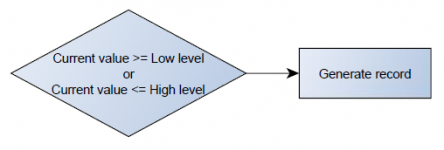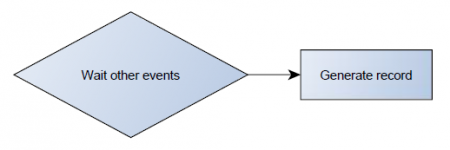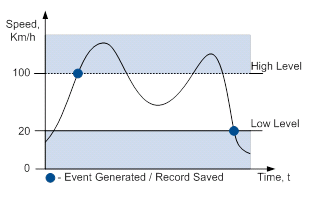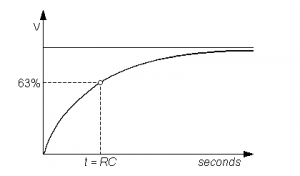Difference between revisions of "FMU130 I/O settings"
(Created page with "{{Template:FMU I/O settings|model=FMU130|ctrIO=[https://wiki.teltonika.lt/index.php?title=FMB120_I/O_settings I/O settings]|ctrCAN=FMU130 CAN adapters|FMU130 with LV-CAN200...") |
m (Protected "FMU130 I/O settings" ([Edit=Allow only administrators] (indefinite) [Move=Allow only administrators] (indefinite))) |
(No difference)
| |
Latest revision as of 13:44, 2 September 2019
Main Page > EOL Products > FMU130 > FMU130 Configuration > FMU130 I/O settingsWhen no I/O element is enabled, AVL packet comes with GNSS information only. After enabling I/O element(s) AVL packet contains current value(s) of enabled I/O element(s) along with GNSS information.
Input Name
I/O element name.
Current Value
If device is connected to Configurator all current I/O values are displayed in this column. Also I/O current values can be seen in Status→I/O Info tab.
Units
Units of measurement.
Priority
This field allows to enable I/O elements and setting them a priority so they are added to the data packet, which is sent to the server. By default 12 I/O elements with Low priority are enabled: Ignition, Movement, Data Mode, GSM Signal, Sleep Mode, GNSS Status, GNSS PDOP, GNSS HDOP, External Voltage, Speed, Battery Current, Battery Voltage. All records made by FMU130 are regular, and regular packets are sent as low priority records.
Priority level (AVL packet priority) can be:
None Priority
Module doesn't make additional record.
Low Priority
Module makes an additional record with an indication that the event was caused by an I/O element change (depending on Operands configuration).
High Priority
Module makes an additional record with High priority flag and sends event packet immediately to the server using GPRS.
Panic Priority
This priority triggers same actions as High priority, but if GPRS fails, it sends an AVL packet using SMS data if SMS data sending is enabled and the number is provided in SMS/Call Settings.
High and Low Level
These levels define I/O value range. If I/O value enters or exits this range, FMU130 generates an event.
Event Only
When this is selected, I/O element status value will be appended only to eventual records, otherwise I/O element status value will appear in each AVL record.
Operands
Defines when to generate event: On Exit, On Entrance, On Both, Monitoring, On Hysteresis, On Change or On Delta Change.
Operand On Exit
Record is generated when input value leaves a range between low and high level limits.
Operand On Entrance
Record is generated when input value enters a range between low and high level limits.
Operand On Both
Record is generated by both On Exit and On Entrance operands' logic at same time.
Operand Monitoring
No event at all. Values are recorded only when other triggers worked.
Operand On Hysteresis
Record is generated when input value crosses the high limit value from below the low limit value or vice versa.
Operand On Change
Record is generated when input value changes.
Operand On Delta Change
Record is generated when input value changes and the absolute change becomes equal to or higher than the limit value.
Avg Const
If Avg Const value is 10, new value must be present for 1 second to register the change to a new value. Internal sampling is done every 40 ms, so 25 samples are taken per second. To configure 5 seconds of averaging multiply 10 by 5 yielding 50 as Avg Const value. The same logic works if the device is in Deep Sleep mode.
Averaging follows RC exponential curve, see image below:
For Boolean values of 5τ, values is used, that means value change is taken when new values is averaged to more than 99.3%.
Send SMS To
Sends SMS notification about event to selected number from SMS/Call Settings GSM Predefined Numbers list if event priority is set to Low, High or Panic.
SMS Text
The SMS Text field can be altered and any text can be entered. Maximum message length is 160 symbols (numbers, letters and symbols in ASCII, except for comma “,”).
SMS Event Text may be either in default or composed format.
Default format:
Date, time, longitude, latitude, 'SMS text', value
Example:
2018/11/02 12:00:00 Lon:0.000000 Lat:0.000000 Alarm 1
Composed format:
Composed format may consist of text and defined commands which start with % symbol.
Supported commands:
| Command | Description |
|---|---|
| imei | IMEI |
| fw | Firmware version |
| fullfw | Full firmware version |
| modem | Modem firmware version |
| gnss | GPS firmware version |
| vin | OBD VIN number |
| lat | Latitude (non-float value) |
| lon | Longitude (non-float value) |
| sat | Satellites in use |
| time | Timestamp |
| din1 | Digital Input 1 |
| din2 | Digital Input 2 |
| din3 | Digital Input 3 |
| ain1 | Analog Input 1 |
| out1 | Digital Output 1 |
| out2 | Digital Output 2 |
| pdp | PDOP |
| hdp | HDOP |
| exv | External Voltage |
| gmap | Google Maps link |
| mov | Movement |
| odo | Trip Odometer |
| op | GSM operator |
| spd | Speed |
| ib | iButton |
| mod | Data Mode |
| sig | GSM signal |
| slp | Sleep Mode |
| cel | Cell ID |
| lac | Area Code |
| tmp | Dallas Temperature 1 |
| mac | BT MAC address |
| dtc | OBD fault codes |
| flat | Latitude (float value) |
| flon | Longitude (float value) |
| date | Date in yyyy/mm/dd format |
| datetime | Time in hh:mm:ss format |
| val | Eventual IO value |
| io'par_id' | Element value by parameter ID |
Composed text example:
%imei Movement %io50010
Event SMS text:
352094082828606 Movement 1
 |
If FMU130 is in Deep Sleep or Ultra Deep Sleep mode and an SMS event occurs with Low priority (which does not wake up FMU130), then the device does not send the message. It is saved to device memory until it wakes up from Deep Sleep or Ultra Deep Sleep mode and GSM modem starts working normally. After it wakes up, all the messages that are saved to memory will be sent, but keep in mind that only 10 messages can be saved to memory – all other messages will not be saved, until there is free memory space. |







